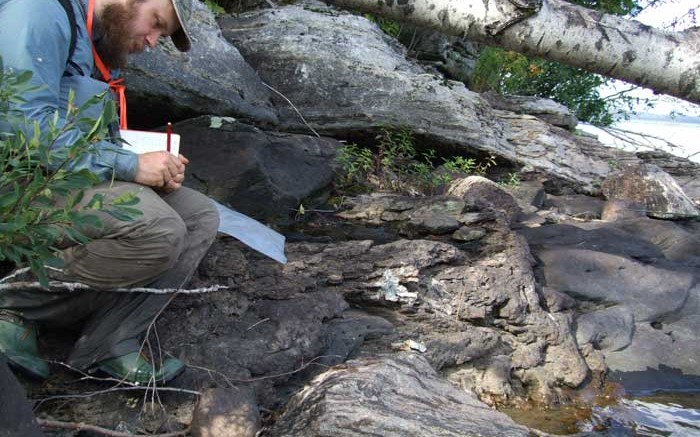Matamec Explorations (TSXV: MAT; US-OTC: MHREF) took a hit after the Montreal-based explorer published a feasibility study for its Kipawa joint-venture heavy rare earth elements project near Rouyn-Noranda, Que. Its shares dropped 33%, or 8.5¢, to close Sept. 4 at 17¢, despite the study showing the project is technically and economically viable.
Kipawa is envisioned as a 3,653-tonne-per-year, open-pit operation producing 1,516 tonnes of heavy rare-earth concentrate, plus 2,137 tonnes of light rare-earth concentrate each year. The deposit, located on the Zeus property, has reserves of 19.8 million tonnes with a 0.41% diluted total rare earth oxide grade and a 15.2-year mine life. The initial cost to build Kipawa is $374 million, including a 15% contingency. Matamec owns 51% of the project and its partner Toyota Tsusho Corp. (TTC) holds the rest.
While the start-up costs are 18% higher than the $315.8 million estimated in a March 2012 preliminary economic assessment (PEA), the total operating expenditures dropped 13% to $21.53 per kg of mixed rare earths, thanks to the junior’s optimization work over the year. However, the company previously estimated a larger annual output of 4,110 tonnes per year.
The project’s economics may have disappointed investors, compared to those of the PEA. The latest study shows Kipawa has a $260-million net present value (NPV) and a 21.6% internal rate of return (IRR) using a 10% discount rate on a pre-tax basis. The PEA estimated a pre-tax NPV of $500 million and a pre-tax IRR of 36.9%, using the same discount rate.
“The IRR and NPV are lower than previously, but the prices they used for the [light rare earth elements] particularly are below the current estimated spot price,” Luisa Moreno, an analyst at Euro Pacific Canada, writes in an email.
“The economics are not the best ever seen for a mining project, but the fact that they were able to produce a positive feasibility using modest light rare earth element prices is pretty good,” she adds.
Edward Miller, the company’s director of investor relations, notes the IRR has dropped from when the company did the PEA a year ago, mainly due to the sluggish prices for rare earths. “The rare earth pricing this year has fallen from the 2011 highs and hit a low. It has started to rebound over the last couple of months . . . but that really lowered the IRR.”
Miller points out that there are several opportunities that could bolster Kipawa’s economics, including building a second pilot plant, where test work could improve recovery rates. He says there is room for improvement in the open-pit design, and that it is “a high-quality deposit, and there is significant upside to bring the IRR well above 25% pre-tax.”
On an after-tax basis, the feasibility shows that Kipawa has a 16.8% IRR and a $128-million NPV using a 10% discount, whereas the PEA didn’t disclose Kipawa’s after-tax numbers.
Asked what challenges lie ahead for Matamec at Kipawa, Miller says that if rare-earth prices keep going up that would be “positive,” and that the second pilot plant also needed to be completed, after which the company would communicate the recovery process and higher recovery rates. Kipawa has a total recovery rate of 70%.
Looking at its to-do list, Matamec intends to finish the second pilot plant soon, followed by an environmental and social impact study early next year. It plans to begin building the mine in early 2015, with start-up anticipated in late 2016.
The company has $4.5 million, including tax credits, which it says should be enough to finish most of the second pilot plant and the forthcoming study, estimated to cost $6 million.
Byron Capital Markets analyst Jon Hykawy predicts that while Matamec’s partner TTC is not required to fund 49% of the project’s costs, it will keep doing so to advance Kipawa and secure heavy rare earths outside of China.
While Hykawy says that Kipawa could become a mine, he cautions that Matamec may have a hard time raising capital through equity.
“With the stock trading at a generous value compared to our new target price, new shareholders will be hard pressed to achieve any sort of reasonable return. We worry that while TTC and/or Toyota may be willing to carry a greater burden of financial risk for the purpose of having ready access to a new supply of heavy rare earths, TTC may also ask for a larger stake in return,” he writes in a note to clients.
Hykawy has lowered his “speculative buy” rating to a “hold,” and his previous 50¢ target price to 20¢.


Be the first to comment on "Matamec drops on feasibility study"